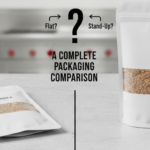
RFID vs. Barcodes for Evidence Tracking: A Side-by-Side Analysis
Automated identification technology (AIT), such as barcoding and radio frequency identification (RFID), is increasingly used by forensic labs and law enforcement to track and manage forensic evidence, firearms, and personnel.
These automated technologies are useful for capturing, transferring, and collecting data, making it easier to track people and assets.
In this blog, we will be walking through the key differences between RFID and barcodes for evidence tracking so that you can choose the right one. Let’s get started.
Understanding the Basics
What is a Barcode?
A barcode refers to a visual pattern made up of bars (lines) and spaces with varying widths. A barcode reader can scan and decipher each pattern, which is a unique identifier.
Barcodes are widely used in retail, logistics, and library systems because they’re simple, cheap, and effective.
What is RFID?
RFID is an abbreviation of Radio Frequency Identification Technology.
It automatically detects and tracks tags affixed to items using electromagnetic fields. There are three primary parts to an RFID system:
– Tags: Tiny objects with an antenna and a microchip. Tags can be active (having an internal battery) or passive (having no internal power source).
– Readers: Equipment that transmits radio waves and gets signals from RFID tags in return.
– Software: Programs that process the data collected by RFID readers.
Key Differences between RFID and Barcodes
Line of Sight
One of the most significant differences between RFID and barcodes is the need for a line of sight.
– Barcodes: Require a direct line of sight to be scanned. This means that the barcode must be visible to the scanner, which can be limiting if the barcode is obscured or damaged.
– RFID: This technology does not require a line of sight. Wood, plastic, and even clothing are among the materials through which RFID tags can be read.
This makes RFID more versatile in situations where visibility is an issue.
Reading Speed and Efficiency
Speed and efficiency are critical in evidence tracking, especially in busy environments like police stations and crime labs.
– Barcodes: Must be scanned individually, which can be time-consuming. Each item must be oriented correctly, and the scanner must be properly aligned.
– RFID: Can read multiple tags simultaneously. This considerably speeds up the procedure by enabling the scanning of multiple pieces of evidence at once.
Data Capacity
The amount of data that can be stored on barcodes and RFID tags varies greatly.
– Barcodes: Typically hold less data, usually just an identifier that links to a database where additional information is stored.
– RFID: Tags can store more information directly on the chip, such as the item’s history, date of collection, and handling details. This can be particularly useful for maintaining detailed records of evidence.
Durability and Longevity
The physical robustness of the tracking method is crucial, especially for evidence that might be exposed to various environmental conditions.
– Barcodes: Can degrade over time due to wear and tear. They can become unreadable if they are scratched, smudged, or exposed to harsh conditions.
– RFID: Tags are generally more durable. They can withstand harsh environments, including extreme temperatures, moisture, and physical damage, making them suitable for long-term evidence storage.
Security
Security plays a vital role when it comes to evidence handling to avoid tampering and protect the integrity of the evidence.
– Barcodes: Offer basic security. Since barcodes can be easily duplicated or altered, they are more susceptible to tampering.
– RFID: Provides enhanced security features. RFID tags can be encrypted, making them much harder to duplicate or alter. This added security can help maintain the chain of custody more effectively.
Cost Considerations
- Initial Costs
The upfront cost of implementing a new tracking system can be a significant factor.
– Barcodes: These are inexpensive to produce and require minimal initial investment. Barcode scanners are relatively cheap and widely available.
– RFID: Tags and readers are more expensive. The initial setup cost is higher, which can be a barrier for smaller departments or those with limited budgets.
- Long-Term Costs
While initial costs are important, long-term expenses can also impact the decision.
– Barcodes: Have lower ongoing costs but may require frequent replacement of damaged labels.
– RFID: Although the initial investment is higher, RFID can reduce labor costs due to faster processing times and fewer errors. The durability of RFID tags can also result in lower replacement costs over time.
Practical Applications in Evidence Tracking
Barcode Example
Consider a police department tracking physical evidence like weapons, clothing, or documents. Each item is labeled with a barcode. When evidence is checked in or out, an officer must manually scan each barcode. This ensures that the item is logged correctly, but it can be time-consuming, especially if there is a large volume of evidence.
RFID Example
Now, imagine the same police department using RFID technology. Each piece of evidence has an RFID tag attached. When evidence is moved, an RFID reader can scan multiple tags simultaneously, even through storage boxes. This speeds up the logging process and reduces the risk of human error. Additionally, the RFID system can alert officers if any evidence is moved without authorization, enhancing security.
Pros and Cons Summary
Barcodes
Pros:
– Low initial and ongoing costs
– Simple to implement and use
– Widely understood technology
Cons:
– Requires line of sight
– Slower processing times
– Lower data capacity and security
RFID
Pros:
– Faster and more efficient scanning
– No line of sight required
– Higher data capacity and security
– More durable and reliable
Cons:
– Higher initial costs
– More complex implementation
– Potential for interference in certain environments
Conclusion
Both barcodes and RFID have their strengths and weaknesses when it comes to evidence tracking. Barcodes are cost-effective and straightforward, making them a good choice for smaller departments or those with budget constraints. RFID, on the other hand, offers greater efficiency, security, and durability, making it ideal for larger departments or those handling a high volume of evidence.
In a nutshell, choosing between RFID and barcode evidence bags is determined by a range of factors such as budget, specific requirements, and the volume of evidence to be handled.
By understanding the differences and benefits of each technology, you can make an informed decision that will help ensure the integrity and efficiency of your evidence-tracking system.
Share:
Get A Quick Quote
Social Media
Most Popular


How to Choose the Best Plastic Bread Bags for Freshness and Presentation

Top Vacuum Bags and Pouches to Keep Food Fresh Longer

Creative Ways to Use Custom T-Shirt Bags for Brand Promotion
Categories
Tags
Related Posts

Flat Pouch or Stand-Up Pouch? A Complete Packaging Comparison
In today’s competitive marketplace, choosing the right packaging can make all the difference for your product’s success. Whether you’re launching a new product or refreshing

How to Choose the Best Plastic Bread Bags for Freshness and Presentation
In today’s competitive baking industry, quality ingredients and expert recipes are only part of the equation. How your bread is packaged plays a crucial role

Top Vacuum Bags and Pouches to Keep Food Fresh Longer
Keeping food fresh is still a common concern for any residential or commercial kitchen. One of the easiest and most successful ways to help preserve
